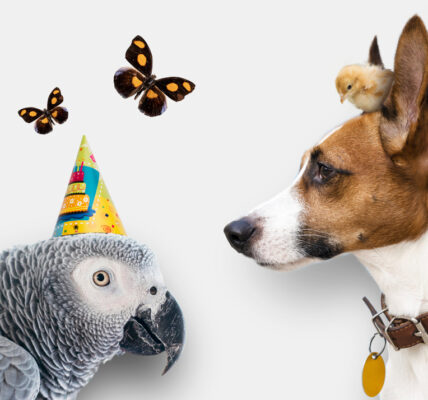Barking and Behavioral Triggers: Identifying and Addressing the Root Causes of Excessive Barking
Excessive and persistent barking is one of the most common behavior problems reported by dog owners. While some woofing is normal, excessive yapping can be disruptive and frustrating for owners and neighbors. The key to reducing excessive barking lies in identifying and addressing the underlying triggers and motivating factors. This involves taking a closer look at your pup’s environment, routine, and communication style to uncover potential stressors or reinforcement that may be encouraging unwanted vocalizations.
Understanding Dog Communication and Barking Language
Pet Communication
Barking is one of the many ways canines communicate and express themselves. It allows them to convey a wide range of messages from alarm, to seeking attention, to feeling lonely. Learning to interpret different growling and vocalizations is key to understanding your dog’s needs. Paying close attention to body language before, during, and after barking episodes can also offer insight. Overall, woofing is part of your dog’s natural communication system and serves an important function for them.
Bark Types and Meanings
Various types of barks indicate distinct meanings. Short, repetitive alarm barks typically signify alerts about perceived intruders or threats in the environment. Conversely, drawn-out, whining barks often relate to anxiety, frustration, or a need for something from their human guardian. Higher-pitched, snippy barks could indicate aggression towards another animal encroaching on their space. Playful yapping during play bows and toy retrieval signifies fun and an invitation to play. Reading mild versus intense body language and growling across contexts provides clues to the intent.
Interpreting Barks
Pay close attention to tone, pitch, length, frequency, and accompanying body language to differentiate various barks. For example, brief alarm barks with a guarding stance show protectiveness versus rapid barks paired with excited jumping which probably means your dog wants to play. Anxious barks often go on and on rather than stopping unless the pet is reassured. Understanding these nuances takes time but helps you address your canine emotional needs.
Common Triggers for Excessive Barking
Barking is a natural pup behavior, but some common situations can promote excessive woofing :
Boredom/Lack of Mental Stimulation
Dogs left alone for long hours without interaction or activities can bark excessively out of boredom and frustration. Ensuring your dog gets plenty of exercise, playtime, training, and enrichment is key.
Lack of Socialization
Undersocialized pups may bark more often at triggers like people, animals, noises etc. due to fear and uncertainty. Proper socialization to various sights and sounds can prevent this.
Changes to Routine or Environment
Big changes to a canine’s routine, environment, household members etc. can also trigger stress that comes out as excessive vocalization. Sticking to consistent schedules and slow introductions to changes can help ease anxiety.
Medical Issues
Pain, illness or conditions like cognitive dysfunction syndrome can prompt excessive vocalization in pets. Checking in with your vet can rule out a medical cause.
Attention-Seeking
Dogs learn that barking garners attention from their humans, even if it’s negative attention. Ensuring you don’t accidentally reward woofing by giving attention is key.
Territory/Boundary Patrolling
Pups are naturally territorial and some breeds are more prone to sounding the alarm about noises, animals or people encroaching on their space. Blocking views and desensitizing may curb this.
Anxiety/Stress
Canines may bark excessively due to separation anxiety and nervousness when left alone or exposed to phobias/triggers like loud noises—counterconditioning and management help for underlying anxiety issues.
Alternative Approaches to Bark Collars
It’s important to note that while no bark collars for dogs are often marketed as a quick fix for excessive yapping , they do not address the underlying behavioral issues. These devices can sometimes suppress the symptom (growling ) without treating the root cause. Instead, a more humane and effective approach is to understand and address the reasons behind the barking.
Identifying the Triggers
The first step in addressing excessive barking is observing your dog closely to pinpoint specific triggers and patterns. Key things to take note of include:
- When does the barking occur – specifically, is it at certain times of day, when you are home or not home, only on walks, etc.? Take detailed notes.
- What immediately prompts the woofing – e.g. noises, sights, being left alone, before meals, etc?
- What is the intensity and duration of the yapping episodes?
- Where does your canine bark – by windows and doors, in the yard, only on walks? Note if it’s tied to territory patrolling.
- Who/what is your pet barking at specifically? Can you identify an object, animal, place, or situation?
You may start to uncover certain themes and motivators the more observations you make. Also, note what you may accidentally be reinforcing and encouraging with your reactions to the growling. For example, if you always yell at your puppy when he barks by the window, he is still getting a rewarding response.
Addressing Common Bark Triggers
Once you identify key barking triggers, you can take targeted action to address the root source:
Boredom/Lack of Stimulation
- Increase daily exercise, playtime and training sessions
- Provide food-stuffed chew toys, and puzzle toys when alone
- Hire a dog walker or arrange doggy daycare
Changes and Anxiety
- Stick to regular daily routines for feeding, walking, and playing to build predictability
- When changes occur, introduce slowly (e.g. new person) and use calming aids (e.g. Thundershirt) initially
- Try calming supplements
Attention Seeking
- Ignore unwanted woofing completely – don’t yell, soothe, or even look at the dog
- Immediately praise and reward quiet behavior, teach a “quiet” command
- Reduce reinforcement of barking by meeting the canine’s needs proactively
Inadequate Socialization
- Arrange controlled meetings with pets/people to build positive associations
- Attend training classes for socialization opportunities
- Use treats and praise to reward calm behavior around triggers
Territory and Boundary Patrols
- Block access to views/triggers like windows and fences
- Teach and reward an alternative settled behavior – e.g. “go to your mat”
- Desensitize the pup to triggers slowly using positive reinforcement
In some cases, anti-anxiety medication may be needed alongside behavior modification training if anxiety is severe. Checking with your veterinarian to ensure no underlying medical issues could also be beneficial.
The Impact of Early-Life Experiences
Puppyhood Experiences
A puppy’s early experiences and environment during the critical socialization window (3-16 weeks generally) lay the foundation for behavior later in life. Stressful events and lack of positive exposures during this key developmental phase can manifest as fear-based behaviors like excessive barking in adulthood. Similarly, if puppies learn barking successfully summons attention or meets their needs, this coping strategy becomes ingrained.
The Importance of Early Training
Proactively addressing woofing during puppyhood through positive reinforcement training can go a long way. Teaching a “quiet” cue followed by praise and rewards for silence helps puppies learn appropriate vocal communication. Attending puppy socialization classes minimizes reactivity towards triggers that prompt urgent yapping. Providing mental stimulation through puzzles, toys and training prevents boredom-growling as well. Starting prevention early equips you to manage this common adult canine behavior issue down the road.
Consistency and Patience for the Long Term
While initial behavior modification may curb frequent barking, reducing it over the long term requires consistency, patience, and commitment to meeting your dog’s needs on an ongoing basis. Sticking to regular routines, providing adequate exercise and stimulation, reinforcing quiet behavior, managing stress triggers, and identifying accidental reinforcement you may be providing are all key elements.
There is no quick fix, and leaving root causes unaddressed will likely lead to relapse. But putting in the effort to get to know your dog’s communication style and motivation for woofing, while making adjustments on your end, can lead to more harmony at home. If excessive barking persists despite your best efforts, consulting an animal behavior specialist for tailored guidance is the next step.
With some detective work and motivation to tackle root causes, you can gain control over nuisance yapping for good. A less frazzled household surely awaits!




